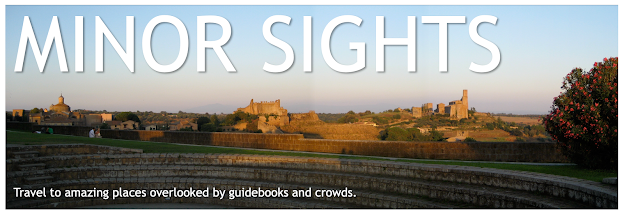
What?
A double whammy of a heritage enclave in the heart of Bombay, spiced up with plenty of contemporary street art.
Why visit?
This time you're getting two for the price of one.
Quaint houses and bungalows make up Ranwar village, an area full of heritage buildings that show what Bandra (and Bombay) looked like before the 21st century caught up with them.
Ranwar Village is also the heart of a vibrant street art scene- with the best works of art executed by the Bollywood Art Project and other graffiti virtuosi.
All of this just screams 'hipster area in the making'. In a decade or so, this will be Bombay's answer to London's Hoxton, Paris's Marais, New York's Greenwich Village or, dare we say it, Hauz Khas in Delhi.
Where?
In Bandra, the self-proclaimed Queen of Bombay's suburbs. Map.
LONG, LONG AGO (like 50 years or so) this wasn't Bombay. It was the boonies- a rural area about 20km north of the city proper. When the Britishers wrested Bombay from the Portuguese in 1661, they did not obtain control of what's now Bandra- the Portuguese remained firmly ensconced.
At some point the Brits did annex the territory, but by that time the Portuguese had left two important legacies, through a combination of forced conversion and fornication: religion and family names.
Which is how Ranwar ended up inhabited by fervent Catholics with names like D'Souza and Pereira, one of 24 villages dotting the Bandra area.
 |
| Jackfuit-wallah prepping his fruit in front of a crumbling bungalow. 40 Rupees a bag. |
Many of the buildings are made of sturdy teak, and the architecture is similar to that found in other heritage areas like Khotachiwada or Pali Village.
 |
| A rickshaw whisks past a Goan-style bungalow. |
 |
| Downtown Ranwar: the Square. |
But Ranwar may just- just- survive. A city like Bombay needs a bohemian area and Ranwar may be just the ticket. And when we say 'bohemian' we don't mean we expect a sudden influx of Czech immigrants- we're talking starving artists and artsy creative types here.
 |
| Come again? |
Ranwar's narrow streets and crumbling houses make it a great setting for a community that values creativity and hipster life styles.

And with that in mind, it's no surprise that Ranwar has become one of the centers of Bombay's burgeoning street art scene. The most prominent art is the work of an initiative called Bollywood Art Project. B.A.P, as it is known, is based in the heart of Ranwar and really deserves its own article, which you can find here.
 |
| Typical Ranwar: a bike buzzes past a crucifx and some impromptu art (aka graffiti.) |


Of course, an up-and-coming hipster area needs some up-and-coming joints to hang out, and in the last few years a first few places have opened up: there's the Birdsong Organic Cafe, where gluten equal bad karma, a creative space called The Art Loft (although it was closed when we last visited- hopefully a temporary measure?) and, most subversive of all in cow-coddling India, Imbiss, a German-inspired joint serving tasty burgers and other non-veg delicacies.
And this is how Ranwar's heritage architecture may survive- thanks to an influx of street artists and gluten-fearing foodies. Let's be grateful- they're our best hope of preserving this slice of Old Bombay.
Getting there:
You'll find Ranwar hemmed it between Hill Rd and Mt Carmel Rt. Chapel Rd, Waroda Rd and Veronica Rd are the area's main drags, and you'll find plenty of art on these as well as the narrow lanes in between them.
Useful links:
Golden Bandra: Ranwar
Bombay Jules: The Graffiti of Ranwar






Such an interesting tour of the place. I like such little secret places. Great theme of your blog.
ReplyDeleteThanks Indrani, glad you enjoyed it. Do you live in Bombay?
DeleteLovely,nostalgic ,heritage places. Away from those monstrosities and hustle and bustle of stress filled lifestyle. I could stay here forever!!
ReplyDeleteThanks Edgar. Are you in Ranwar right now?
DeleteHeartening to see that "neighbouring" India is so tolerant and proud of all its past religions and cultures. Very glad to see this blog. Gives the opportunity to a Pakistani to be a virtual tourist of the Indian lanes and alleyways that are ingrained in our minds due to the Bollywood movies of the 1980s. Keep up the good work !
ReplyDeleteHi Abu, thanks for the comment. Yes, India is very diverse and although there are occasional tensions, in general it's a very tolerant place. I hope you will have teh opportunity to visit one day!
DeleteI've been here with my friends it's an amazing place to visit! Good information provided 👍✨
ReplyDeleteThanks for letting us know Nandini. Had things changed a lot? It's been a while since we were there...
Delete